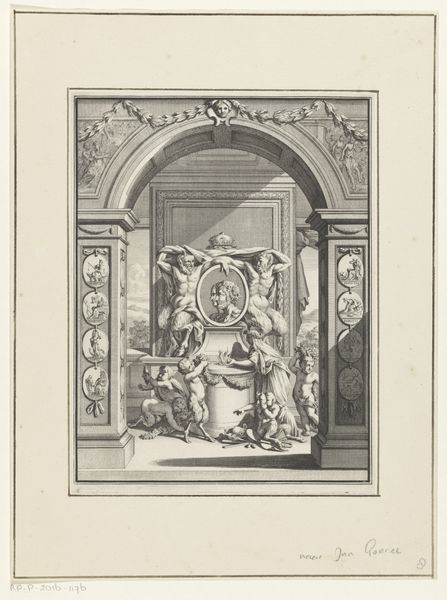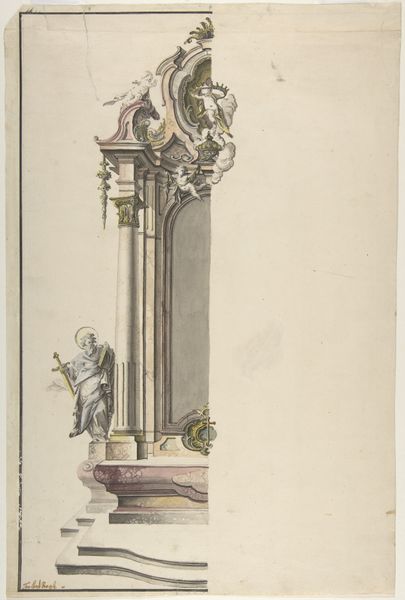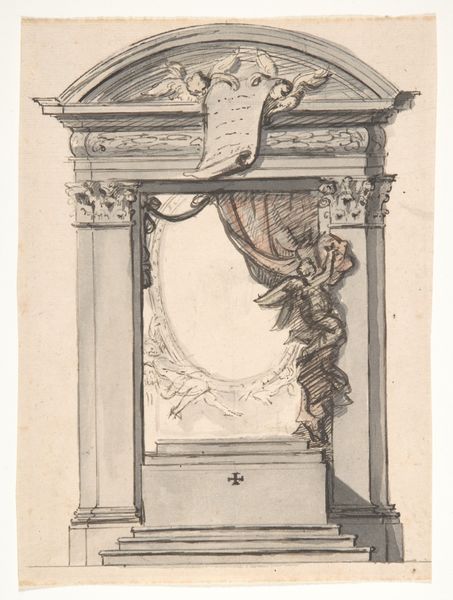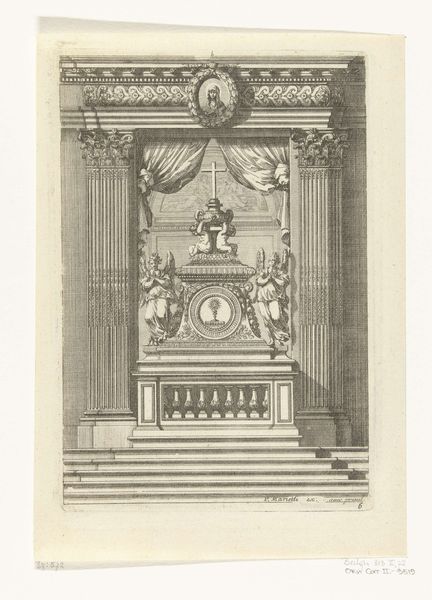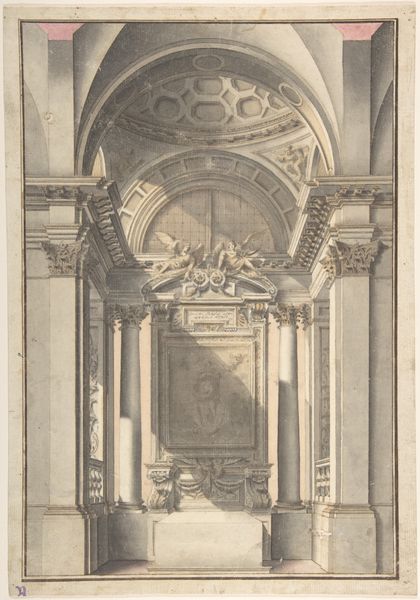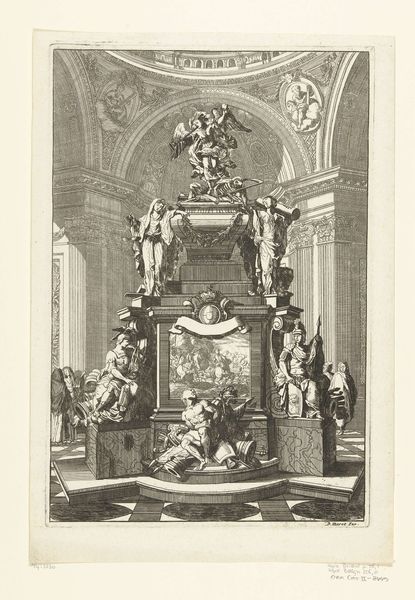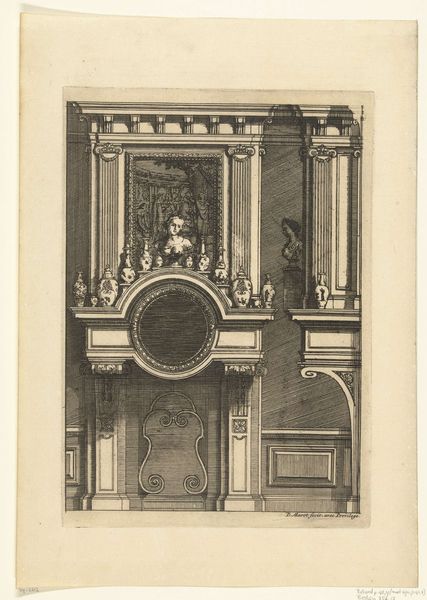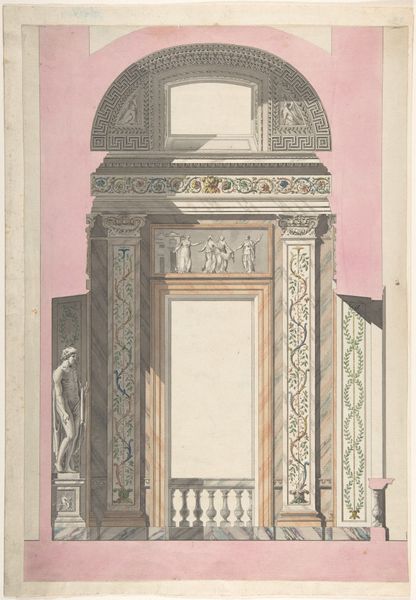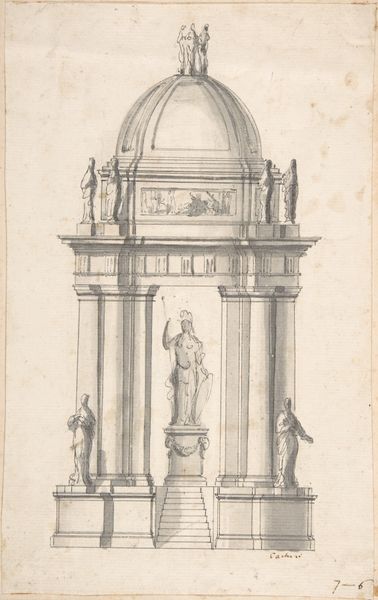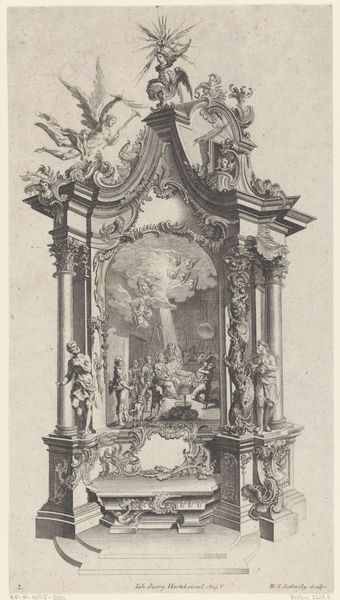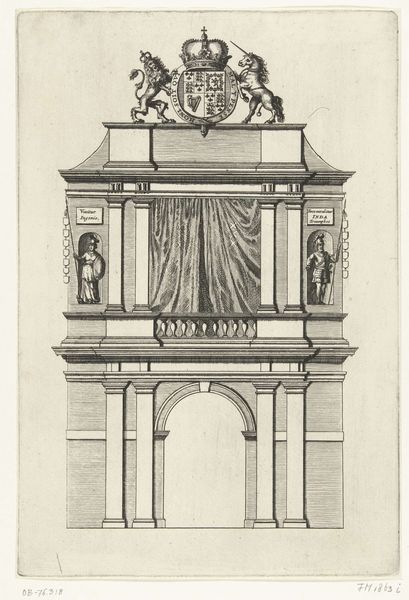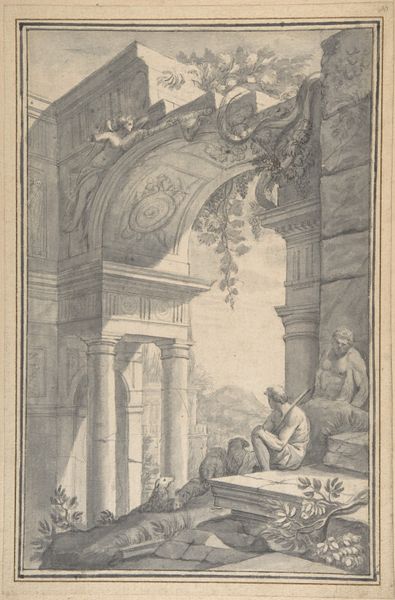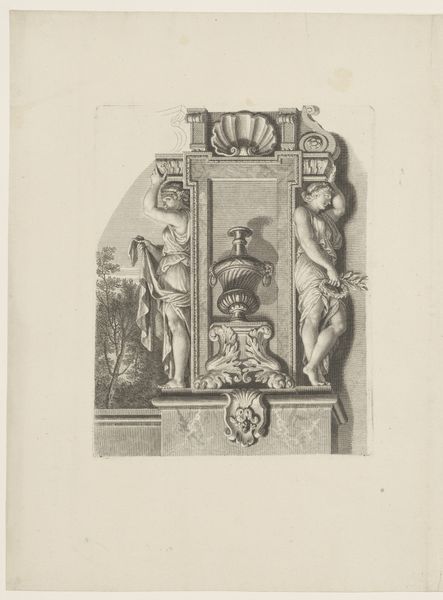
drawing, print, architecture
#
drawing
#
neoclacissism
# print
#
perspective
#
figuration
#
history-painting
#
academic-art
#
architecture
Dimensions: sheet: 16 7/8 x 10 9/16 in. (42.9 x 26.8 cm)
Copyright: Public Domain
Editor: Here we have Louis Gustave Taraval’s "Design for a Pulpit," dating from around 1750-1794. It's a drawing and print, currently housed at the Met. The precision of the architectural drawing is striking! How might we interpret its place within Neoclassical art production? Curator: We must consider the labor and materials embedded within its creation and intended reception. Look at the meticulous lines of the drawing, clearly intended for mass reproduction through printmaking. This isn’t simply an elevation; it's a proposal for a *product*, to be constructed using stone, plaster, perhaps even cheaper, readily available materials to be replicated throughout the city or region. The illusion of grandeur serves a very material, persuasive purpose. Editor: That makes sense. The very act of mass producing what is meant to feel unique and awe-inspiring! It almost undercuts the spirituality. Curator: Precisely. And think about the labor involved in both the creation of the design and its potential physical manifestation. Artisans, stonemasons, carpenters, all contributing their skills to create this object, destined for use in service of power structures. What social implications might follow from the making of it? Editor: The Pulpit as stage for the priest to stand, not to mention, where he can influence consumption and manipulate behavior of people within earshot of his elevated voice. So, it all comes down to purpose. This drawing’s main value rests in understanding that architectural works from the Neoclassical era—often viewed through a lens of timeless elegance—were materially driven projects, made and used within an economy. Curator: Indeed. And with a closer consideration of that material reality, our appreciation moves beyond aesthetic admiration toward critical awareness. Editor: I will never see a drawing or building the same again! Thanks for sharing your perspectives with me.
Comments
No comments
Be the first to comment and join the conversation on the ultimate creative platform.
